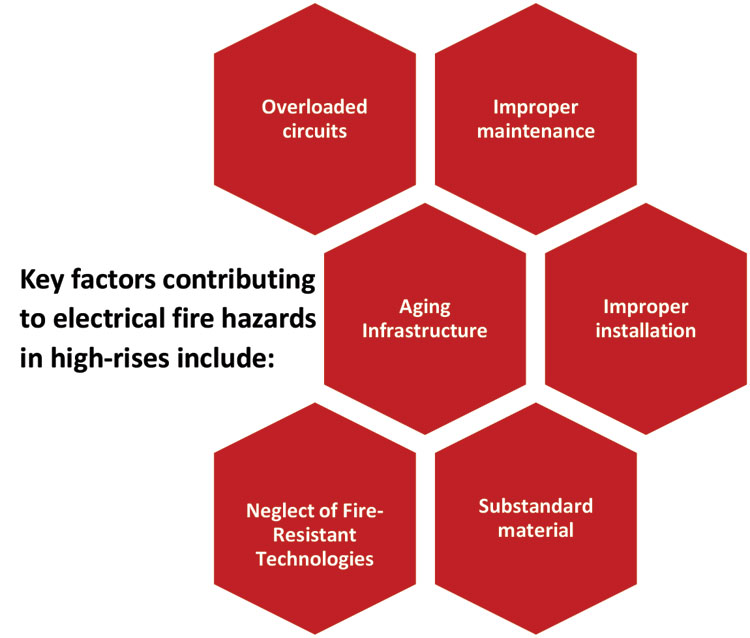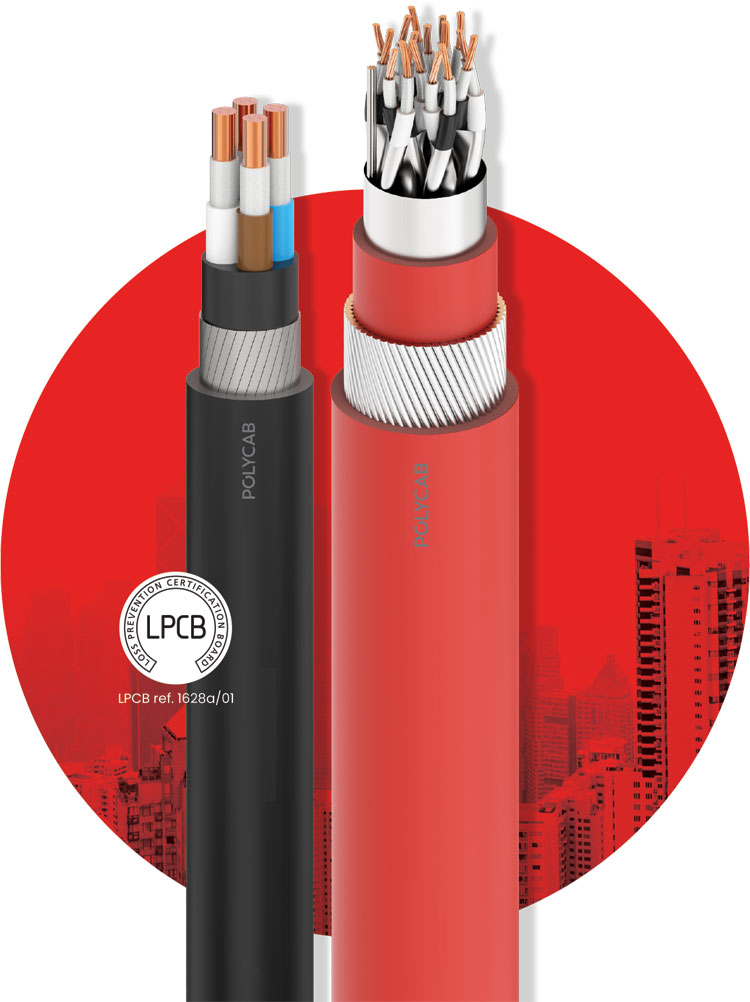Mumbai’s ever-expanding skyline symbolizes the city’s relentless march toward urbanization and progress. Mumbai’s high-rise developments dominate the national landscape, with the city accounting for 77% of India’s tall buildings. Globally, Mumbai ranks 17th in the number of high-rise buildings, underscoring its importance as a key player in vertical urban development. This trend is not just a response to land constraints but also reflects a broader urbanization movement, with developers and policymakers working together to create modern, sustainable housing solutions.
With high-rise buildings becoming the norm, safety in these vertical marvels has become a pressing concern. Among the most critical challenges is ensuring electrical fire safety, a matter of life and death for residents and a necessity for protecting property and critical infrastructure.
Mumbai Fire Brigade data reveals that electrical faults are responsible for over 70% of the city’s fire incidents annually, making it the leading cause of urban fires. The dense population in high-rise buildings magnifies the risk, where a single electrical fire can jeopardize hundreds of lives and cause irreparable damage.In the first seven months of 2024, a total of 3,197 fire incidents were reported, leading to eight fatalities and 112 injuries, with electrical faults accounting for 70% of these cases.
Fire incidents caused by electrical faults in Mumbai during 2019-22
![POLYCAB-Article]() Enhancing Safety with Innovative Solutions
Enhancing Safety with Innovative Solutions
Addressing these challenges requires a blend of advanced technology, strict regulations, and community awareness. Some of the actionable measures include:
- Fire-Resistant Cables
Employing high-quality, fire-rated cables like Polycab’s IGNIS range ensures that electrical systems maintain integrity during fires. These cables reduce flame propagation, emit low smoke, and are halogen-free, minimizing toxic gas release and enhancing visibility for rescue operations. - Adherence to Standards
Compliance with the National Building Code (NBC) of India and Central Electricity Authority (CEA) guidelines is vital. Routine inspections of electrical systems should be mandated to ensure adherence to safety norms. - Smart Electrical Systems
IoT-enabled electrical systems can detect faults in real-time and prevent overloading. Smart meters and automated cut-offs reduce human error and enhance safety, a feature increasingly incorporated in newer developments. - Proper Grounding and Bonding
Ground Fault Circuit Interrupters (GFCIs) and Residual Current Devices (RCDs) must be installed to prevent short circuits and electrical shocks. - Emergency Preparedness Systems
High-rises should integrate reliable fire detection and suppression systems, including water sprinklers, alarm hooters, and smoke detectors. Fire-resistant cables like Polycab’s IGNIS support these systems by maintaining operational integrity during emergencies.
A Focus on Materials and Installation
The quality of materials used in electrical systems can mean the difference between a contained incident and a catastrophic disaster. Fire-retardant Low Smoke Zero Halogen (LSZH) cables, like those offered by Polycab, are specifically designed to:
- Resist catching fire.
- Emit minimal smoke, ensuring better visibility during evacuations.
- Produce no harmful gases, aiding fire-fighting efforts.
These features are crucial for environments like hospitals, malls, and residential high-rises, where safe evacuation depends on the reliability of electrical systems under duress.
![POLYCAB-Article]() Recommendations
Recommendations
The rising incidents of electrical fires in Mumbai’s high-rises call for a concerted effort among government agencies, builders, developers, and residents. Collaboration is key to creating a resilient urban environment where fire hazards are mitigated effectively, and occupants feel secure. Key recommendations are:
- Formulating Robust Regulations: Agencies like the Municipal Corporation of Greater Mumbai (MCGM) and the Central Electricity Authority (CEA) need to establish and periodically update fire safety codes, ensuring they align with global best practices.
- Mandating Regular Inspections: Regular audits of electrical systems in high-rises can help detect vulnerabilities. The Mumbai Fire Brigade plays a critical role in inspecting and certifying compliance with safety standards.
- Promoting Technology Adoption: Government incentives for adopting advanced fire safety technologies, such as IoT-enabled fire detection systems and fire-resistant cables, can encourage widespread implementation.
- Public Awareness Campaigns: Awareness initiatives can educate residents and property managers about fire safety protocols and government mandates. Campaigns like Electrical Safety Week serve as platforms for community engagement.
The Path Forward
Mumbai’s growth as a global metropolis depends on the safety of its infrastructure. By adopting advanced materials, like Polycab’s fire-survival cables, and integrating smart technologies, the city can mitigate the risk of electrical fires. Collaboration among stakeholders is key to building a resilient skyline where safety is integral, not optional.
This proactive approach will not only protect lives but also ensure that Mumbai continues to rise—safely and sustainably.
For more information,
polycab.com



 Enhancing Safety with Innovative Solutions
Enhancing Safety with Innovative Solutions Recommendations
Recommendations


